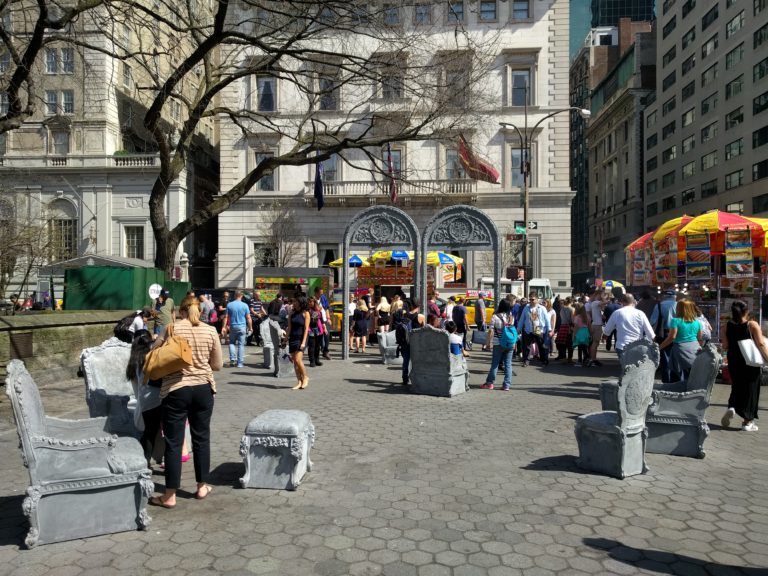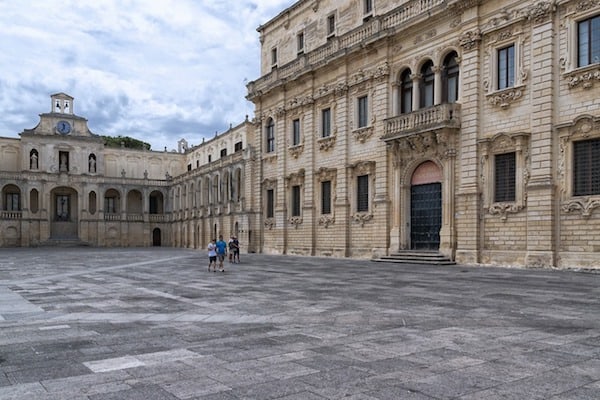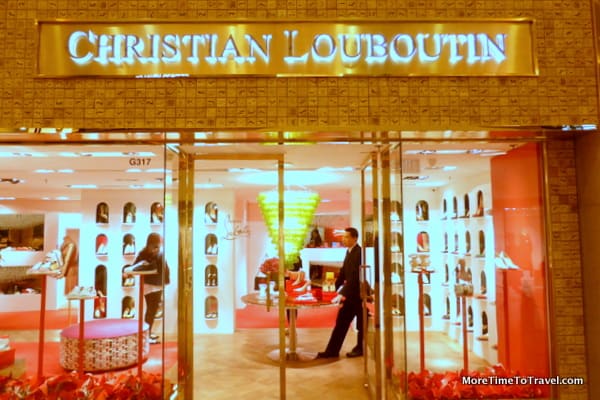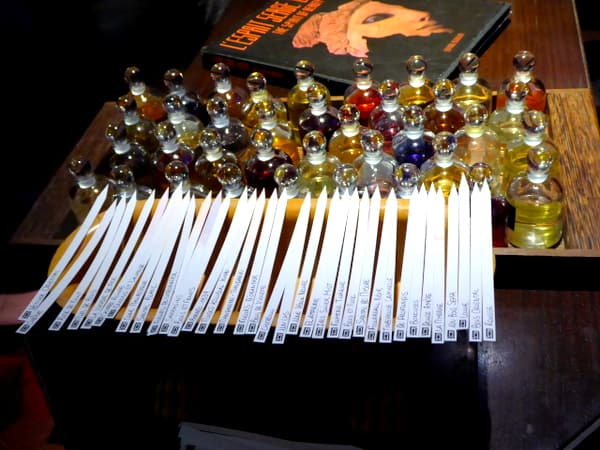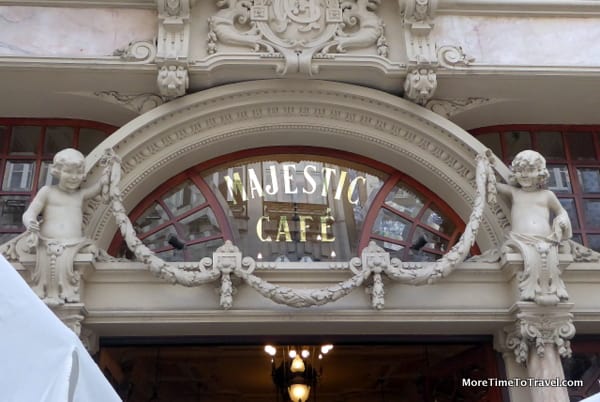Schloss Leopoldskron in Salzburg: A Nostalgic Return to a Favorite Place
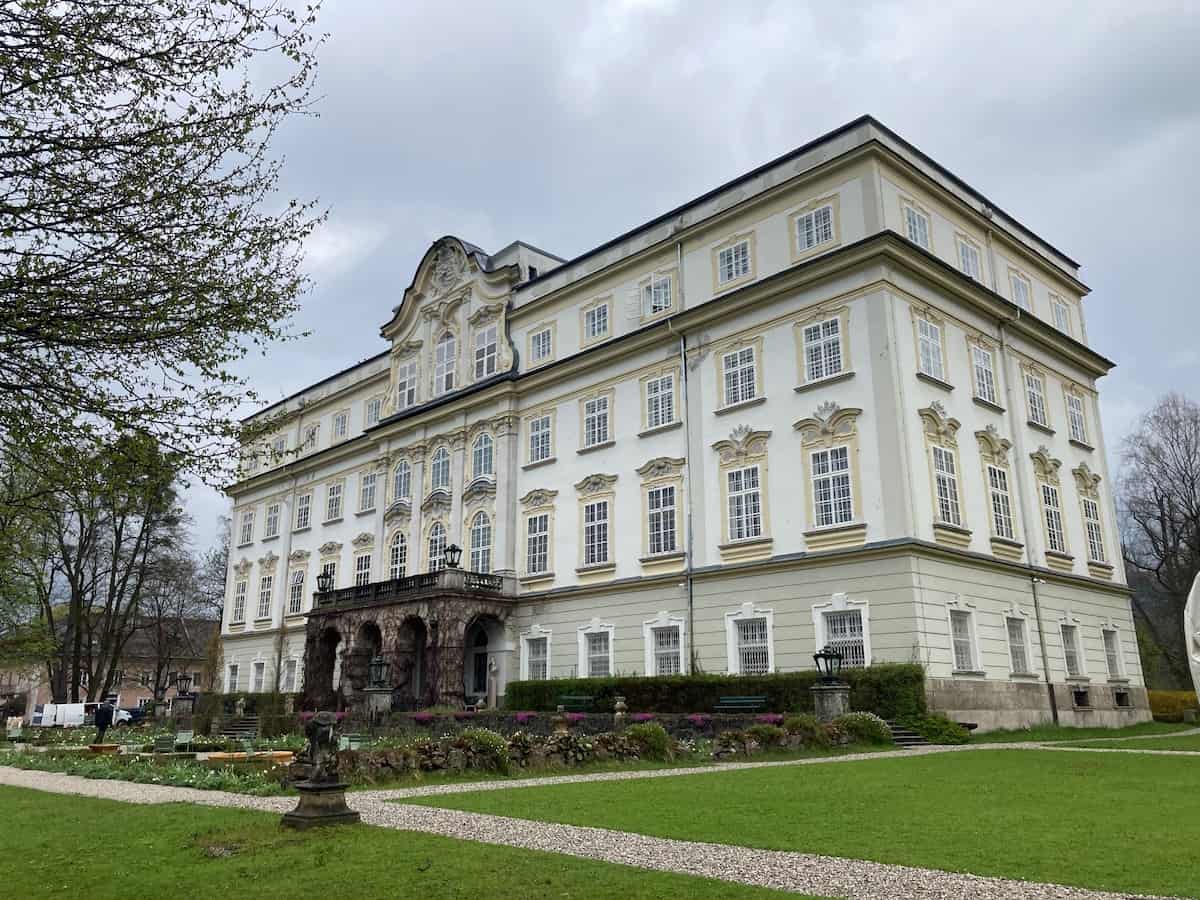
Guest contributor *Ali Webb returns to Schloss Leopoldskron in Salzburg and finds the historic Austrian palace as magical as ever.
The odd thing about returning to a place you’ve been many times before is that you often meet your younger self. Being at the Schloss Leopoldskron in Salzburg, Austria, is one of those places.
It’s a beautiful castle, a peaceful place, and a place of learning and reflection. I’d like to tell my younger self to relax and be present. I need my older self to know that, too. These fabled rooms have hosted diverse individuals and groups with many different stories. It’s important to pause and listen to see if you can hear them.
The rich history of Schloss Leopoldskron
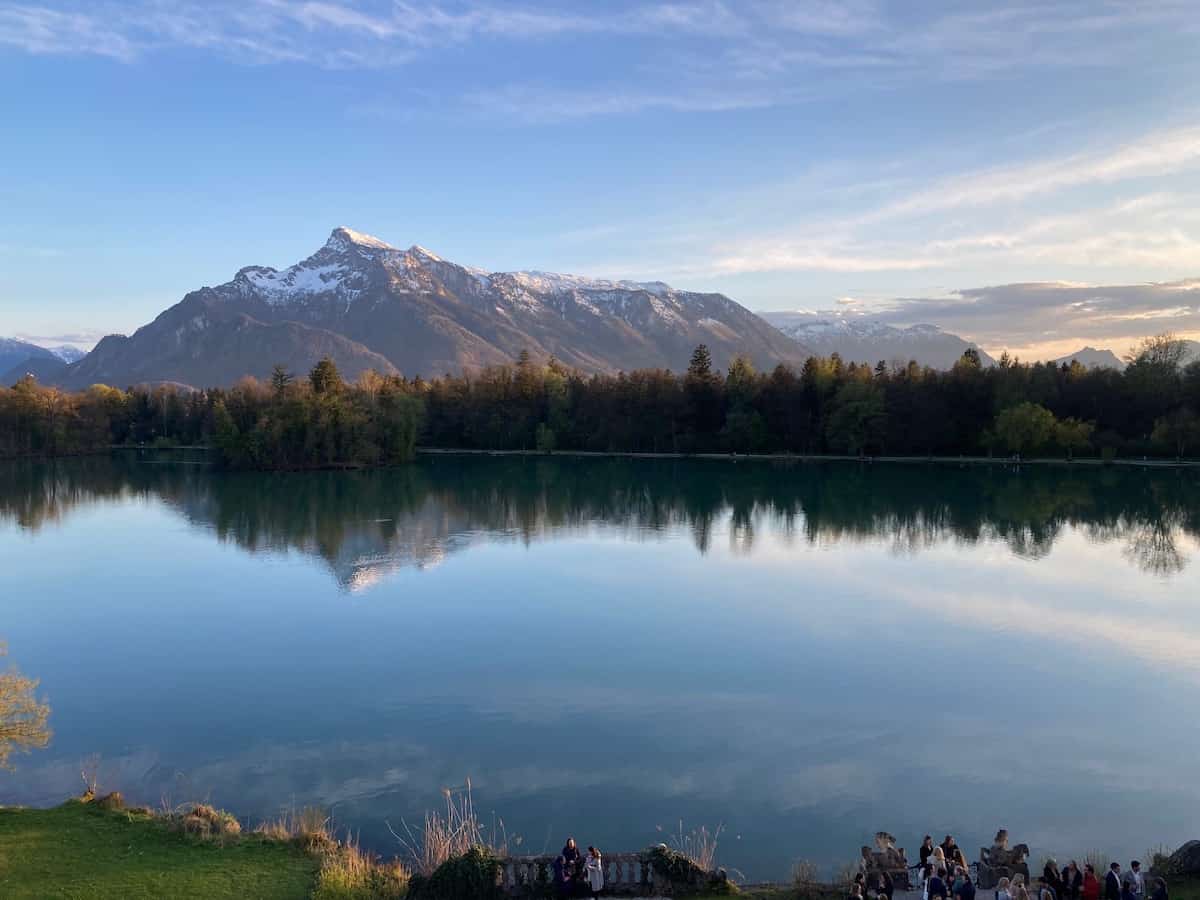
Salzburg was founded as an Episcopal See in 696 and became a seat of the Archbishop in 798. Its main sources of income were salt extraction, trade, and gold mining. The fortress of Hohensalzburg, one of the largest medieval fortresses in Europe, dates from the 11th century.
Schloss Leopoldskron’s 300-year history is filled with sadness and loss, as well as with hope and light. In 1736, the Schloss was built by the Prince-Archbishop of Salzburg, Leopold Anton Freiherr von Firmian. The Prince-Archbishops of Salzburg (long before becoming part of Austria) were the ultimate power players in Salzburg, which was an independent Bishopric of the Holy Roman Empire.
Religious wars and strife were commonplace in those days, and Prince-Archbishop Von Firmian (a Catholic) is remembered for his cruel expulsion of more than 22,000 Protestants from the Salzburg principality. The building of this palace was thought to be the way he used to recover his social standing although it was likely financed by the confiscated wealth of the expelled.
Legend has it that the Prince Archbishop’s heart is buried under the marble of the Schloss’ private chapel. The first time I visited the Schloss, the then-director of the Salzburg Seminar took us into the private chapel on the ground floor. He told us if we came back, very late at night, and listened very intently we would hear the Archbishops’ heart beating from where it was buried beneath the chapel’s stone floor.
The Schloss passed through several owners until it was sold to Max Reinhardt, Europe’s most famous theater impresario and co-founder of the Salzburg Festival. Reinhardt created the magical place that the Schloss is today, decorating whimsical and wonderful rooms as a backdrop for his plays and the musical theatre he would stage with friends.
That ended, however, when Reinhardt (who was Jewish) fled Austria in the 1930s to avoid the Nazi occupation, never to return. Nazi jackboots echoed on the stone and marble floors as the Schloss was confiscated by the Nazi government as “Jewish property.”
During the war, it hosted Nazi functionaries and SS troops, serving as a summer residence and guesthouse. Amazingly, some of the furnishings—notably the huge paintings in the main dining room—survived (perhaps because they were simply too large to take).
The contemporary renaissance of Schloss Leopoldskron
In 1945, Schloss Leopoldskron was returned to the Reinhardt estate, and in the summer of 1947, Helene Thimig (Reinhardt’s widow) offered the use of Schloss Leopoldskron to Clemens Heller, a Harvard graduate student, visionary and founder of Salzburg Global Seminar.
As described on its website, the Salzburg Seminar in American Studies (as it was first known and is still labeled on the front door of the Schloss) was founded by Heller, together with two fellow Harvard students – Scott Elledge and Richard Campbell – as an international forum. The first session offered not only education on American literature, art, history, and culture, but also provided a beautiful, calm setting, and nourishing food, things that were enormously appreciated by those from countries long at war. The founders believed that former enemies could talk and learn from each other, even as countries reeled from the ravages of war.
For the past 75 years, the Schloss has hosted the Salzburg Global Seminar with the mission, “To challenge current and future leaders to shape a better world.” That was the mission that brought me to this place several times as part of my work.
A hotel with magical sights and sounds
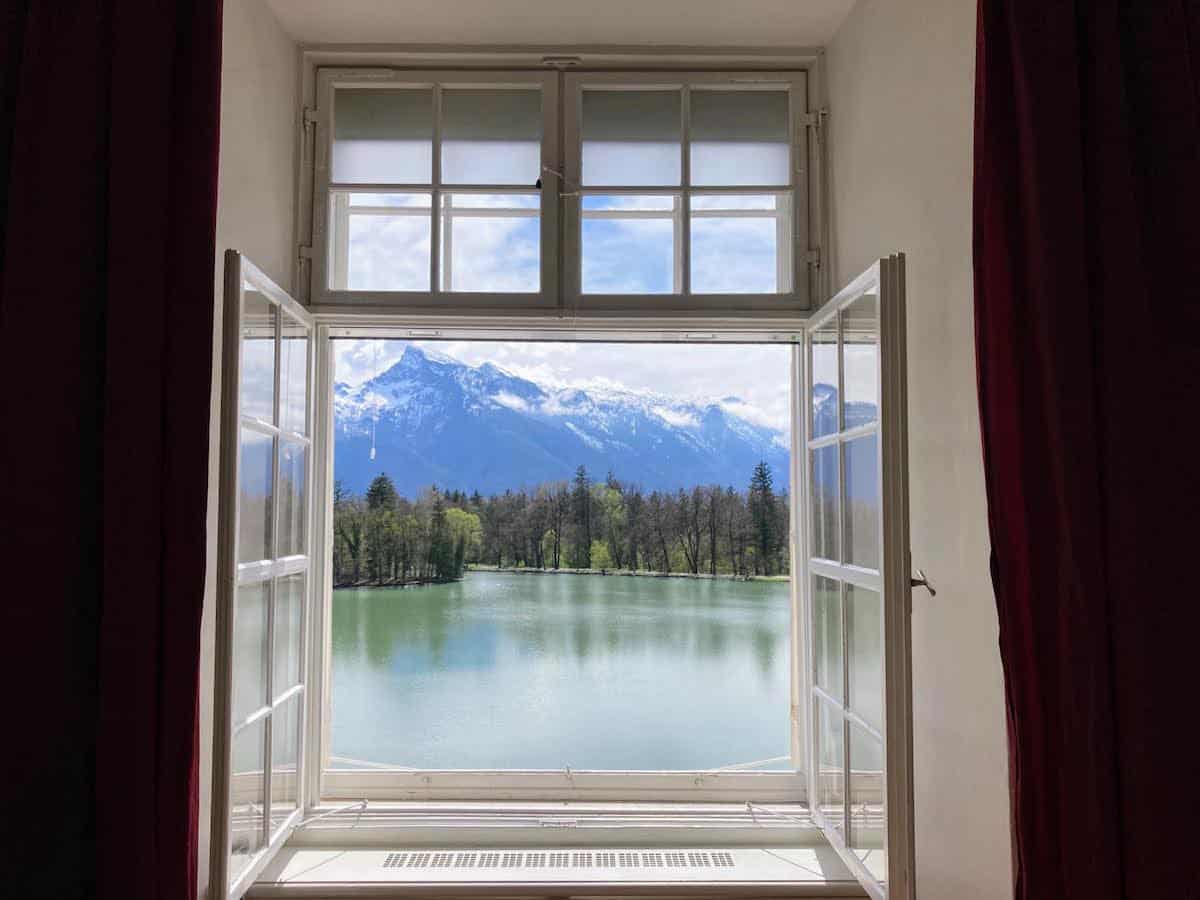
Since 2014, the Schloss also houses a hotel (Hotel Schloss Leopoldskron), and now I can return anytime I want. The setting is particularly evocative since the exterior (and some interior rooms as inspiration) were used in the filming of The Sound of Music, one of my all-time favorite movies. Ironically, locals are not huge fans of the movie, which took certain liberties with the actual historical individuals depicted.
The rooms at the Schloss are magical. I think the light green Chinese room is my favorite. The people in the painted panels that line the walls (parents and children in outside scenes) are doing everyday tasks — fishing, making music, and even dancing.
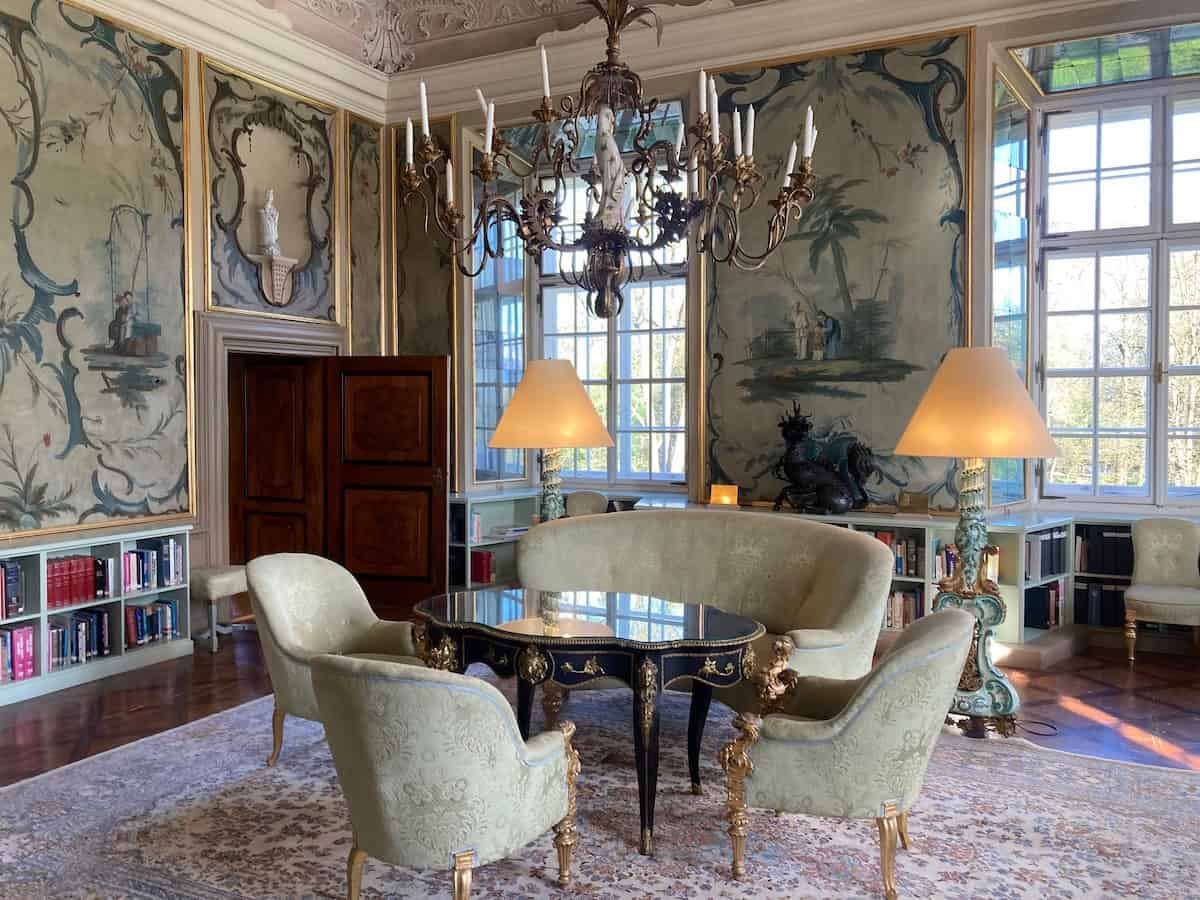
The recently redone Red Salon includes fantastical wall paintings of mountains, birds, and butterflies, and features a long table that seats 10 people with its red top and red candle tapers. This room represents the spirit of the Seminar, where people come together to talk, solve problems, and break bread together. Years ago, I sat in this room with other fellows talking about so many different topics and listening to their stories.
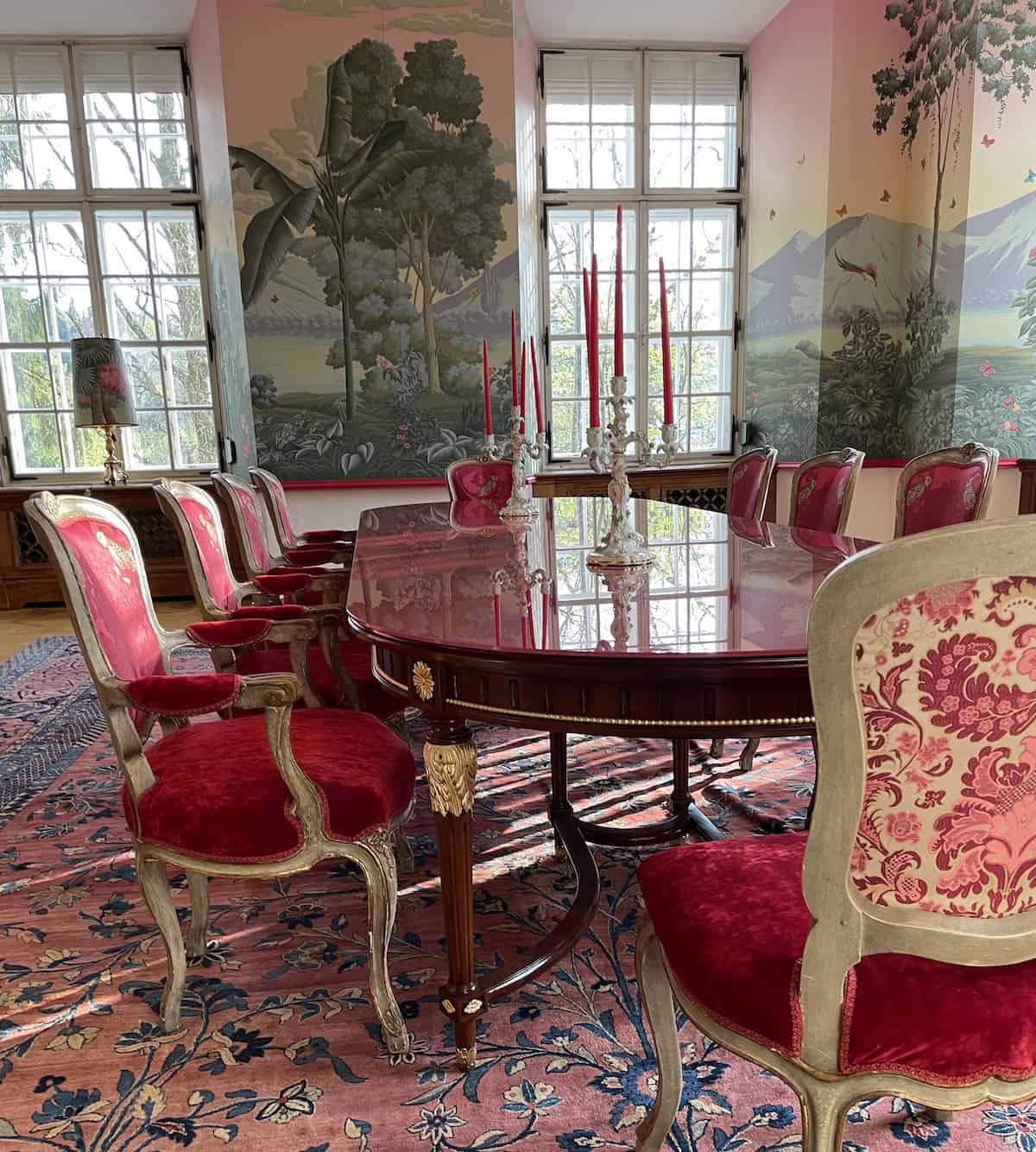
This morning, I can hear the birds outside as I walk through these rooms—the library with its hidden door, the majestic marble dining room, and the graceful mirrored Venetian room.
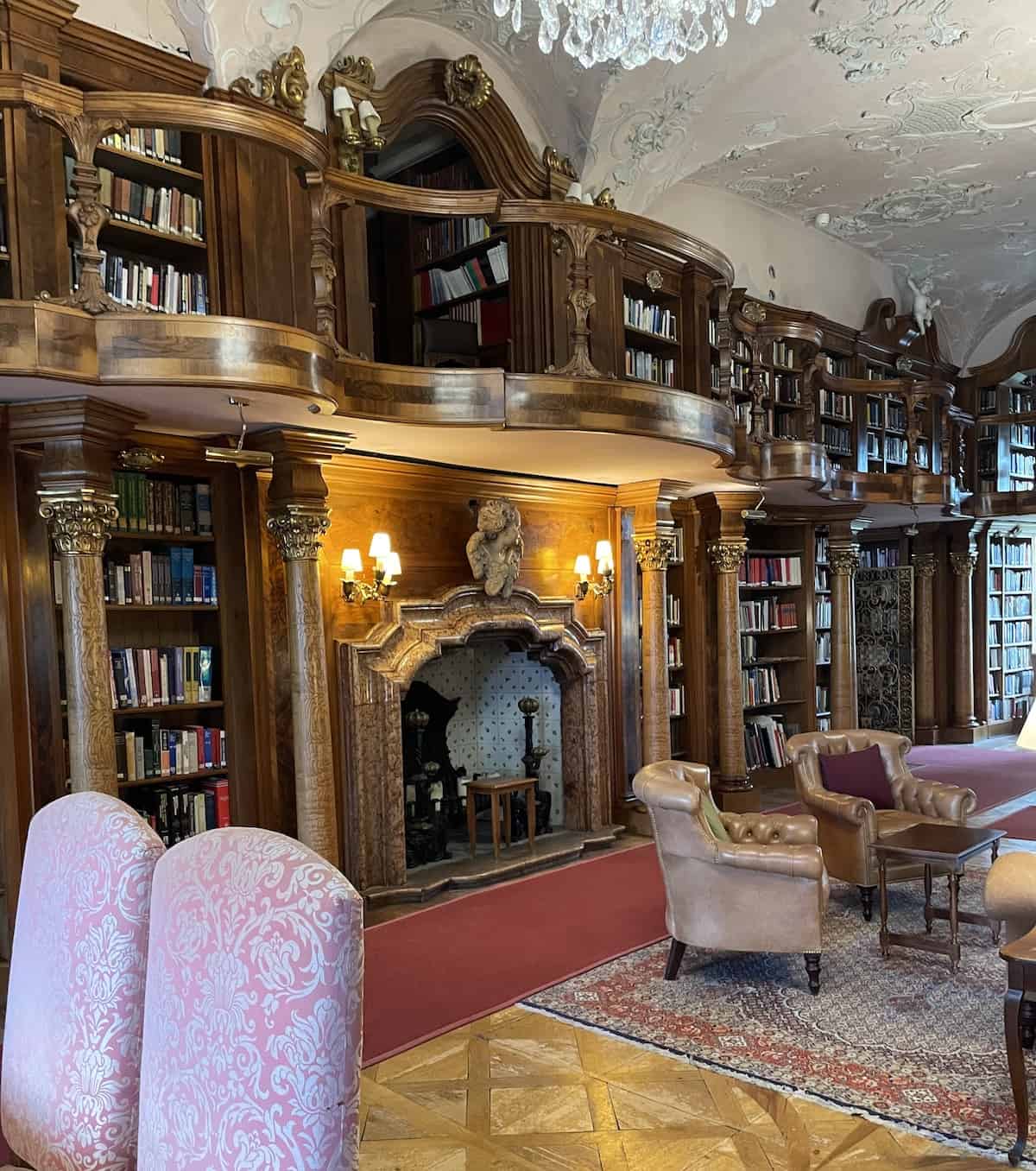
Outside, the gateway to the lake is guarded by two stone seahorses. Across the lake is the beautiful mountain, the Unterburg. And I often hear the church bells; they seem to be always ringing somewhere in Salzburg.
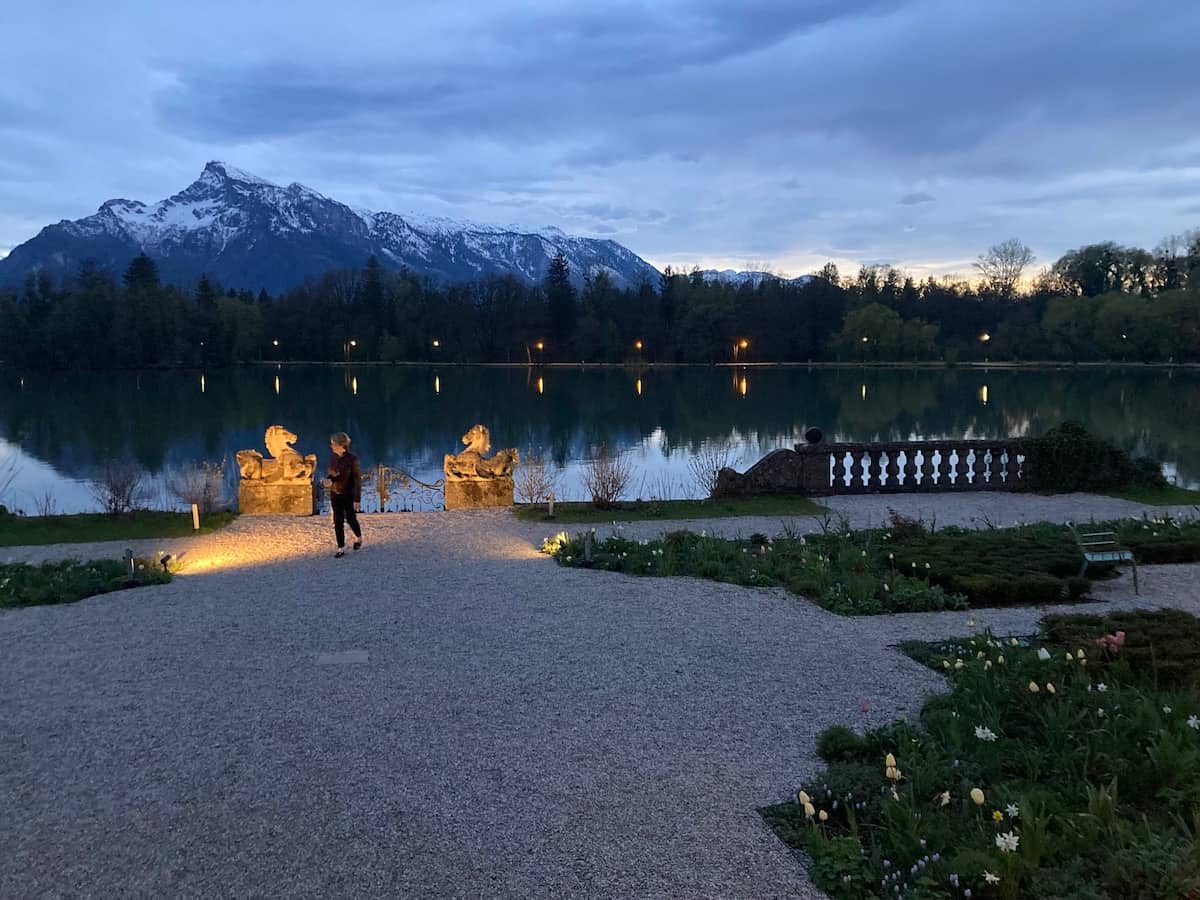
Our room is one of the 12 suites located in the Schloss itself—the Sir David Gore-Booth Suite, named after a late 20th Century British diplomat. The room features soaring ceilings and a separate bedroom with huge windows looking out into the garden and lake. Some 55 rooms are also available across the courtyard in the Meierhof (originally the stables for the Schloss, but now beautifully appointed rooms). A lovely buffet breakfast is served every day in the Schloss’ majestic two-story marble dining room.
In the six years since my last visit, time seems to have stood still at Schloss Leopoldskron. It stands serene, waiting for me to return yet again.
*Ali Webb, PhD is adjunct faculty at the University of Michigan and Columbia University. Her long career in strategic communications offered many opportunities for domestic and foreign travel. She has written a bi-monthly Sunday travel column, The Indulgent Traveler, for a Gannett daily in Michigan and now contributes to other travel websites. We are delighted to welcome Ali as a contributor to More Time To Travel.
All photo credits: Keith Kehlbeck
IF YOU GO
- Salzburg, Austria Official Tourism Website
- Bad Gastein, Austria, a charming mountain town in the Alps, about 1.5 hours away, is worth visiting.
Also on MoreTimeToTravel:
Fans of Ludwig Bemelmans will enjoy a new display of the writer-illustrator’s art at Ocean House Rhode Island.
Save to Pinterest!!

